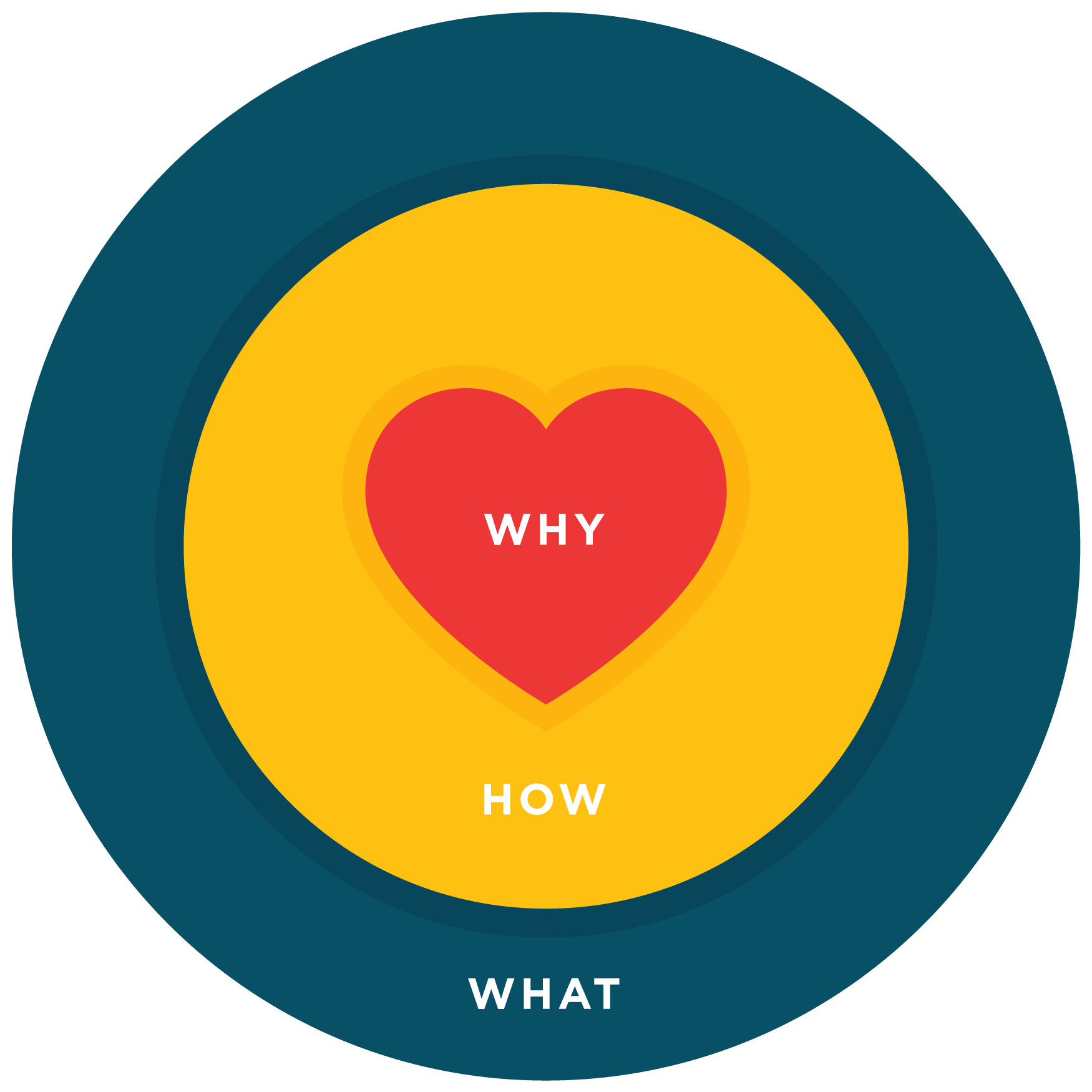To execute a successful CRM implementation, business leaders need to answer the right questions before even starting the project. Failed implementations too often result from project stakeholders lacking a guiding vision for their platforms. Or just as often, sponsors will make the fatal mistake of answering every question and guiding all strategy with a single word: “technology.”
What do I mean by that?
The easiest way to see if a project is misguided is to compare it to Simon Sinek’s Golden Circle framework. The Golden Circle allows companies to differentiate themselves by communicating a core belief that drives everything they do. The premise is simple: Instead of focusing on what you do (your product), start with your why (your motivation), and how your how (your core competency) and what are guided by that why.
Leaders can apply this framework to much more than their company; they can use it to define the guiding principles of specific teams or even individual projects.
You probably get where I’m going with this.
What’s a problem with many failed CRMs? If we apply the Golden Circle to the implementation project, we might find that “technology” was the answer to the why, how and what. These sorts of simplistic answers almost never work because they show that the company lacks a guiding vision or purpose for their technology.
A rule of thumb: During a CRM implementation, technology should be your how but not your why or what. A look at these other two variables individually reveals why.

The Why - Your overarching goal
The why for a CRM implementation communicates the vision for the platform to every stakeholder and user. It outlines the point of the project: Why is this technology worthwhile? What clear yet aspirational goal does it help us achieve? It should tie back to your company’s mission to ensure everyone will buy in; it gives everyone a reason to care about the CRM’s success.
So it can’t just be “technology” or “more money.” These answers are vague and uninspiring; they don’t generate user buy-in.
An effective why also gives the CRM’s project manager something to turn to at every fork in the road. Every decision made should tie back to the why; if an idea doesn’t, it should be part of a different project.
We’ve seen leaders pursue a CRM without a firm why all too often. They invest in technology for the sake of having technology or because they see its effectiveness at similar companies, but they never really grapple with its purpose.
So there is no defining vision for the CRM, and that can cause countless problems. Implementations without purpose are often derailed by unnecessary additions because project managers don’t have a guiding objective. Adoption often suffers in these situations, too, because users don’t understand the point of using the new tool.
{{cta('a7beaa7e-be12-44e5-ae0a-c147f5a83e98')}}
Here are some examples of compelling why statements:
- To give every at-risk youth a chance of receiving the care they need
- To offer doctors the tools they need to provide higher-quality care
- To predict customer needs better
- To disrupt the financial planning market for the benefit of consumers
The What - The definition of a successful CRM implementation
A compelling what for a CRM specifies the desired outcome of the implementation. What will this technology allow your company to do? What metric(s) will it drive?
A defined what serves as a clear end goal for the CRM implementation. It lets all stakeholders and end users understand what the platform will do for them at go-live.
So the lack of a concrete what for a CRM system prevents companies from measuring its success — they’ve never defined what “success” means to them. It also affects adoption as much as the why; users need a strong what to understand the concrete ways the technology will make their lives better.
The best what statements are measurable for these reasons (although they don’t need to be). Here are some examples, both measurable and unmeasurable:
- Reduce customer service resolution times by 30%
- Standardize our sales process and measure time-to-close for opportunities
- Track 100% of company assets in our CRM
- Achieve 95% SLA compliance on customer service cases
- Follow up on all new leads within one business day
Putting it all together
Again, the how of any implementation project is typically the easiest to figure out — it’s the technology you’re setting up. But your how only works if it leads from your why and can help you achieve your what.
The best way to make sure these three factors are all aligned? Complete the following sentence:
“I want to [your why]. So, I am [your how / technology] to [your what].”
If the sentence flows logically, you’re golden. Otherwise, your team of stakeholders needs to revise your project goals to resolve the misalignment.
Need more tips to ensure a successful CRM implementation? Check out our eBook highlighting 4 foolproof ways to maximize your Salesforce investment.



